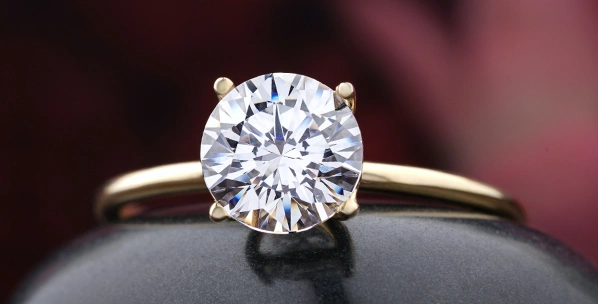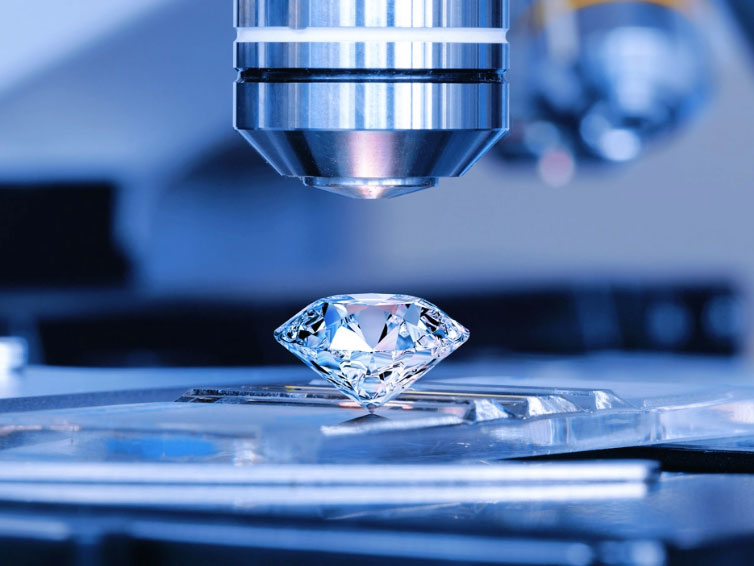Introduction
In the stunning universe of fine adornments, lab-grown diamond rings are causing disturbances. These jewels, established in controlled conditions, offer a supportable and frequently more reasonable option in contrast to conventional mined diamonds. Yet, with regards to setting these shining stones, the selection of “claws” or settings assumes a vital part. We should jump into the entrancing domain of lab-grown diamond rings and their paw settings, investigating how they upgrade magnificence, security, and life span.
What Are Lab-Grown Diamonds?
Lab-grown diamonds, otherwise called manufactured or refined diamonds, are genuine diamonds made in laboratories as opposed to shaped normally north of millions of years. Utilizing trend setting innovation like High Tension High Temperature (HPHT) or Substance Fume Affidavit (CVD), these lab grown diamond rings claws have similar physical and compound properties as their mined partners. They are evaluated on a similar scale — variety, clearness, cut, and carat — making them a certifiable option for the people who look for the splendor of diamonds without the moral worries.
How Lab-Grown Diamonds Vary
While lab-grown diamonds share similar arrangement as normal diamonds, their beginnings put them aside. Normal diamonds are framed under outrageous tension and temperature conditions profound inside the World’s mantle. Lab-grown diamonds, then again, are blended under controlled conditions, prompting less considerations and a more unsurprising quality. This controlled cycle frequently brings about diamonds that are cleaner and can be created at a lower cost.
Advantages of Lab-Grown Diamonds
Picking a lab-grown diamond offers a few benefits:
Moral Contemplations: Lab-grown diamonds stay away from the moral issues related with diamond mining, including ecological obliteration and denials of basic freedoms.
Moderateness: Commonly, lab-grown diamonds are more affordable than mined diamonds, permitting purchasers to get more incentive for their cash.
Customization: The capacity to control the development cycle implies more noteworthy adaptability regarding size, shape, and quality.
What Are Ring Claws?
With regards to adornments, “claws” or “prongs” are the metal pieces that hold the diamond set up. They come in different plans and assume an imperative part in both the stylish and useful parts of the ring. The decision of hook setting influences how unmistakably the diamond is exhibited and the way in which secure it is inside the ring.
Why Paw Settings Are Well known
Paw settings are famous on the grounds that they offer a harmony among excellence and reasonableness. They hoist the diamond, permitting greatest light openness, which improves its radiance. Simultaneously, they give a protected hold, limiting the gamble of losing the stone. These settings come in different styles, each with its remarkable appeal and usefulness.
Kinds of Hook Settings
There are a few paw settings, each offering various advantages and tasteful requests. Here is a glance at probably the most widely recognized types:
Four-Prong Setting
The four-prong setting is an exemplary decision, where the diamond is held set up by four metal prongs organized around it.
Benefits and Disservices
Benefits: Boosts light openness, improves splendor, and takes into account more straightforward cleaning.
Disservices: Somewhat less secure compared to additional prongs, as the diamond might possibly move or become free over the long run.
Six-Prong Setting
The six-prong setting gives a safer hold by utilizing six prongs to fasten the diamond.
Advantages and disadvantages
Stars: Offers unrivaled security, diminishes the gamble of losing the diamond, and can be more reasonable for bigger stones.
Cons: May hinder a portion of the diamond’s light, and the additional prongs could get on things.
Bezel Setting
In a bezel setting, the diamond is encircled by a metal edge that holds it safely set up.
Upsides and downsides
Experts: Gives phenomenal security to the diamond, ideal for those with a functioning way of life, and offers a cutting edge, smooth look.
Cons: Can darken the diamond’s edges and could not grandstand the stone’s splendor as actually as different settings.
Secret Radiance Setting
A secret radiance setting highlights a corona of more modest stones concealed underneath the fundamental diamond, adding additional radiance without modifying the ring’s profile.
Advantages and disadvantages
Experts: Improves the diamond’s brightness cautiously, adds a one of a kind touch to the ring.
Cons: May require more upkeep to keep the secret stones perfect and secure.
Picking the Right Hook Setting
Choosing the right paw setting for a lab-grown diamond ring includes thinking about a few elements:
Style and Feel
The style of the paw setting ought to supplement the general plan of the ring and the wearer’s very own taste. Whether you favor an exemplary four-prong, a solid six-prong, or a smooth bezel, the setting ought to upgrade the excellence of the diamond while lining up with your style.
Strength and Security
Consider the way of life of the wearer while picking a setting. For the people who are dynamic or work with their hands, a safer setting like the bezel or six-prong might be desirable over guarantee the diamond remains solidly set up.
Support and Cleaning
Various settings require changing degrees of upkeep. For example, bezel settings could require more incessant cleaning to keep the diamond shimmering. It’s fundamental to pick a setting that fits with how long and exertion you’re willing to put resources into keeping up with the ring.
Lab-Grown Diamonds in Various Settings
Lab-grown diamonds look staggering in any setting, however their brightness and lucidity can be featured distinctively relying upon the setting style. A four-prong setting could underscore a diamond’s radiance, while a bezel setting gives a contemporary, moderate look. The key is to find a setting that upgrades the special characteristics of the lab-grown diamond while matching the wearer’s style inclinations.
Cost Contemplations
Lab diamonds are for the most part more reasonable than their mined partners. In any case, the expense of the ring can change contingent upon the sort of paw setting picked. More complicated or secure settings could accompany a greater cost tag, however they can likewise offer more prominent strength and an exceptional appearance.
Ecological Effect
One of the critical advantages of lab-grown diamonds is their diminished ecological effect compared to customary mining. Lab-grown diamonds are made with insignificant disturbance to the Earth, settling on them a more manageable decision. Picking an eco-accommodating setting that supplements this perspective can additionally line up with moral and natural qualities.
Future Patterns in Lab-Grown Diamonds
As innovation propels, lab-grown diamonds are supposed to turn out to be much more predominant. Advancements in cutting and setting strategies will probably offer previously unheard-of choices for purchasers. Also, as awareness and acknowledgment of lab-grown diamonds develop, they might turn out to be more standard in the adornments business.
Conclusion
Lab-grown diamond rings with different hook settings offer a mix of magnificence, usefulness, and moral contemplations. Whether you decide on an exemplary four-prong setting or a cutting edge bezel, the right hook can improve the splendor and security of your diamond. As innovation and patterns develop, lab-grown diamonds will keep on offering a shining, reasonable decision for knowing purchasers. Embrace the magnificence and advancement of lab-grown diamonds and find the ideal paw setting to exhibit your jewel’s splendor and your one of a kind style.





